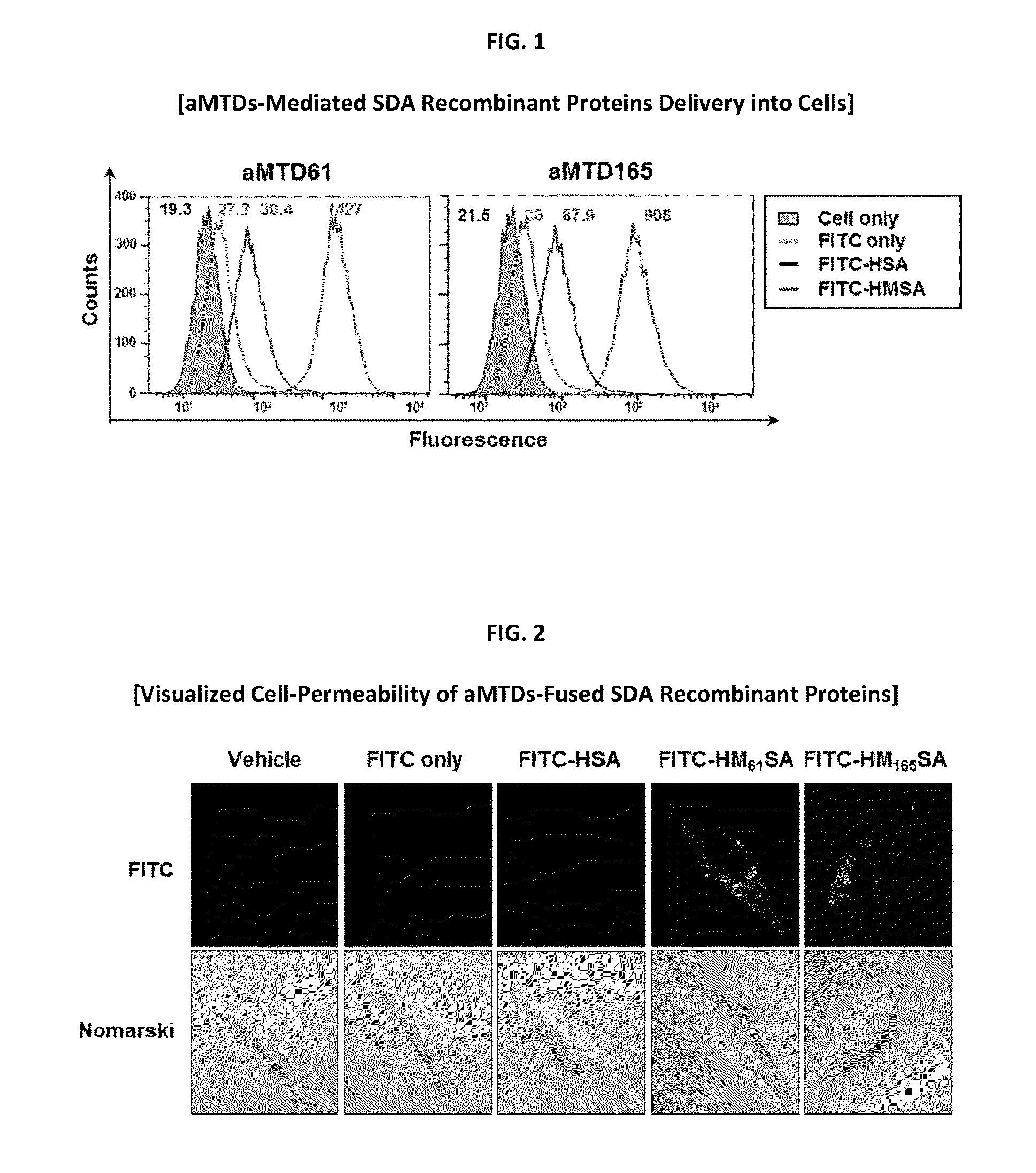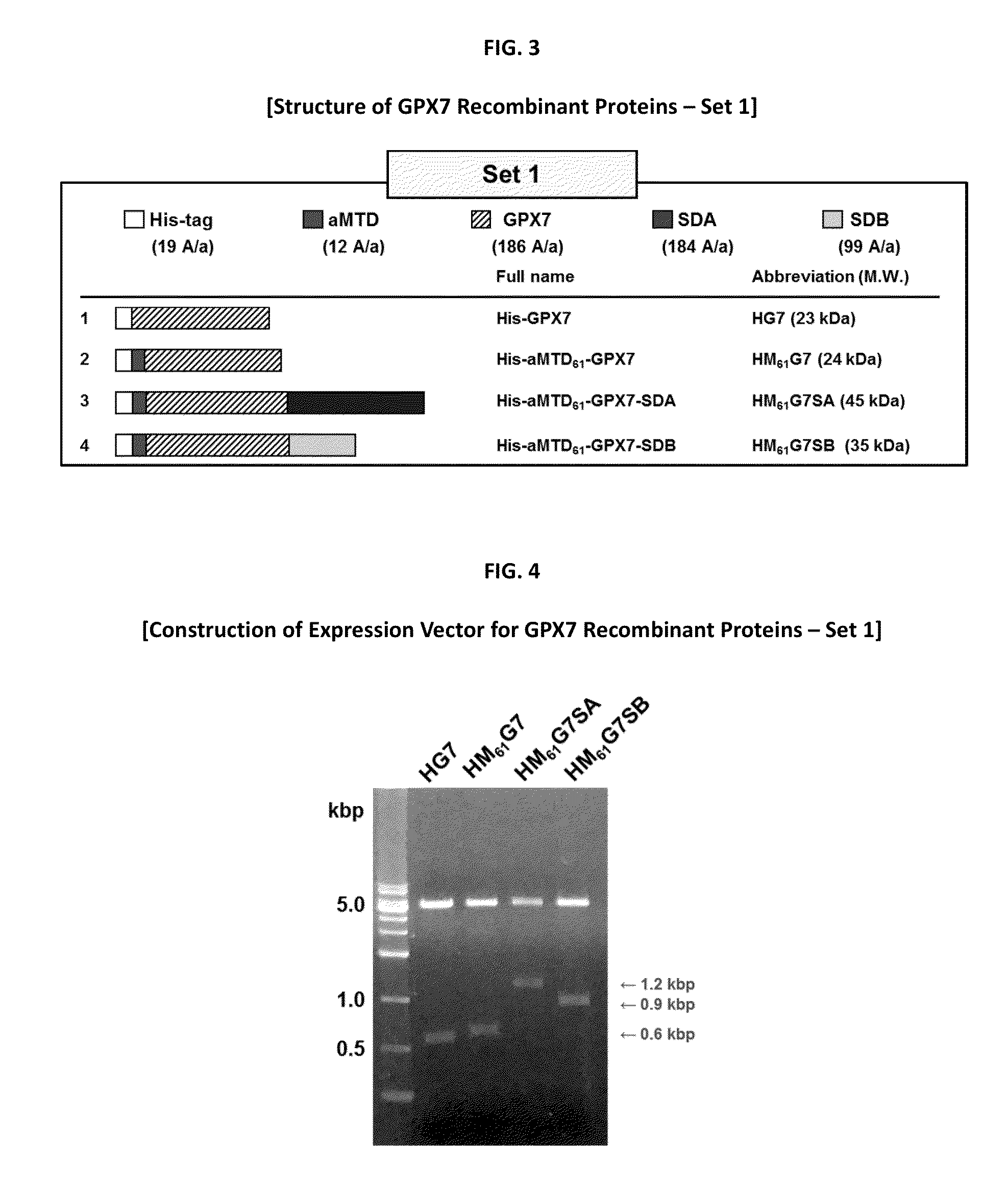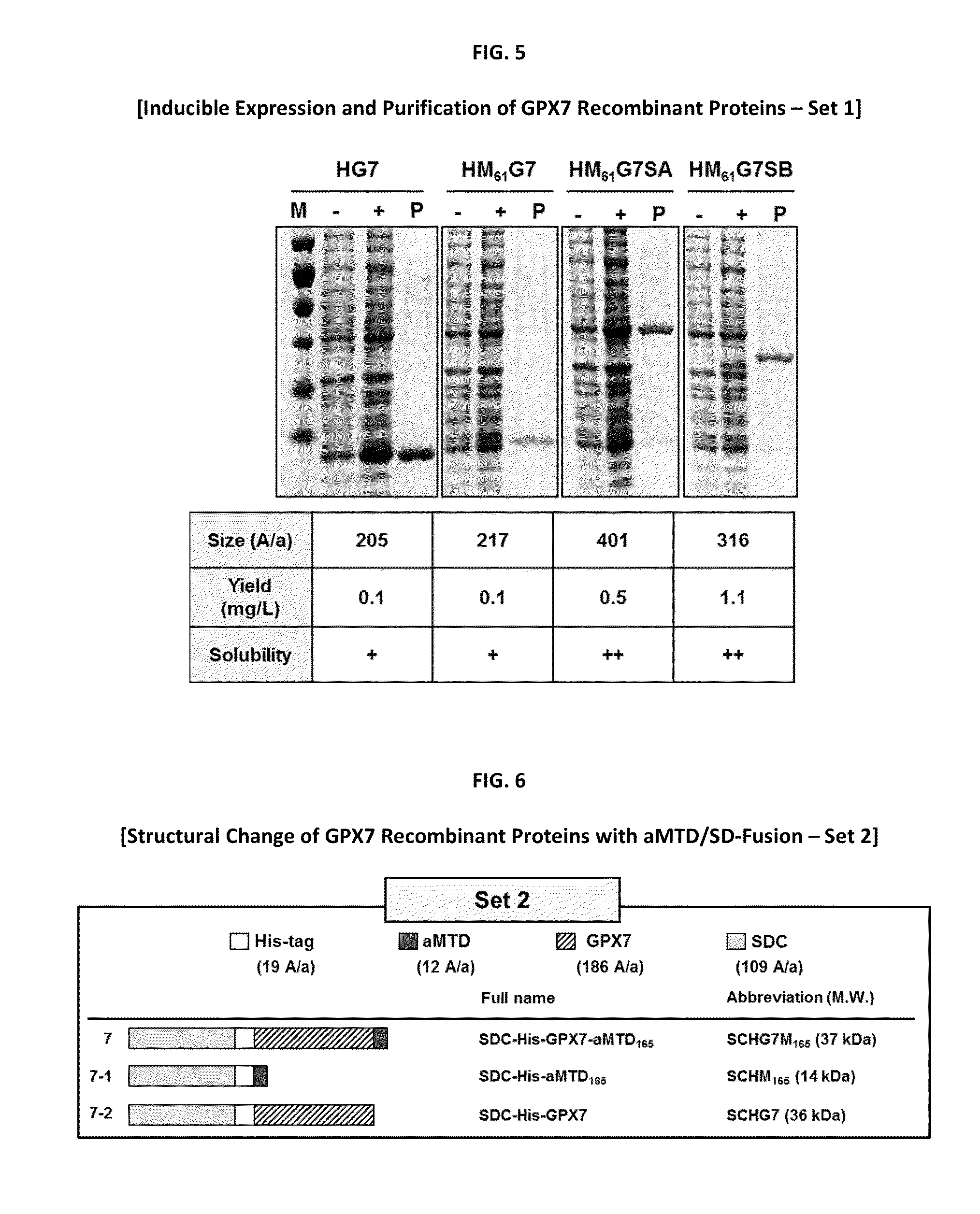Development of Protein-Based Biotherapeutics That Penetrate Cell-Membrane and Induce Anti-Cancer Effect- Cell-Permeable Glutathione Peroxidase7 (CP-GPX7) in Gastrointestinal Track (GIT), Polynucleotides Encoding the Same, and Anti-Cancer Compositions Comprising the Same
a technology of cell-membrane and cell-permeable glutathione, which is applied in the direction of peptide/protein ingredients, enzymology, peptides, etc., can solve the problems of low solubility of recombinant proteins fused to previously developed hydrophobic cpps, limited therapeutic options, and low solubility of solubility/yield and cell/tissue permeability, and achieves anti-cancer effects and solub
- Summary
- Abstract
- Description
- Claims
- Application Information
AI Technical Summary
Benefits of technology
Problems solved by technology
Method used
Image
Examples
example 1
Construction of Expression Vectors for GPX7 Recombinant Proteins
[0113]His-tagged GPX7 recombinant proteins were designed into the expression vectors which contain human GPX7 proteins fused with aMTD61 or aMTD165 and solubilization domain A (SDA) and solubilization domain B (SDB). The GPX7 sequence was amplified using human genomic DNA as a template. GPX7 and solubilization domains were constructed using primer sets (TABLES 7, 8 and 9) by polymerase chain reaction (PCR).
[0114]PCR using 100 ng genomic DNA, 10 pmol each primer, each 0.2 mM dNTP mixture, 1× reaction buffer and 0.5 U Pfu(+) DNA polymerase (MGmed, Seoul, Korea) is following three steps: (i) denaturation (95° C.) for 30 seconds, (ii) annealing (60° C.) for 30 seconds (iii) extension (72° C.) for 1 min each and these steps are repeated 35 times. Set 1 PCR products was cloned at NdeI (5′) and SalI (3′) in pET-28a (+) vector (Novagen, Darmstadt, Germany). Set 2 PCR products was cloned at BamHI (5′) and XhoI (3′) in pET-32a (+...
example 2
Purification and Preparation of GPX7 Recombinant Proteins
[0115]The histidine-tagged GPX7 recombinant proteins were expressed from E. coli BL21-Gold (DE3) competent cells (Agilent Technologies, Santa Clara, USA) grown to an A600 of 0.7 and induced 16 hours at 25° C. with 0.5 mM Isopropyl β-D-1-thiogalactopyranoside (IPTG). The recombinant proteins (HSAM165G7SB and HSAM165SB) were lysed with lysis buffer A (10 mM imidazole, 50 mM NaH2PO4, 300 mM NaCl, pH 8.0), and purified by Ni2+ affinity chromatography. Column bound to proteins were washed three times with 30 ml of washing buffer A (20 mM imidazole, 50 mM NaH2PO4, 300 mM NaCl, pH 8.0). Ni+2 affinity purified proteins were eluted three times with 20 mL of elution buffer A (250 mM imidazole, 50 mM NaH2PO4, 300 mM NaCl, pH 8.0).
[0116]Other recombinant proteins (HG7, HM61G7, HM61G7SA, HM61G7SB, SCHG7M165 and HSAG7SB) were expressed from E. coli BL21-Gold (DE3) competent cells grown to an A600 of 0.7 and induced 3 hours at 37° C. with 0....
example 3
Determination of Quantitative Cell-Permeability of aMTD / SD-Fused GPX7 Recombinant Proteins
[0119]For quantitative cell permeability, the GPX7 recombinant proteins were conjugated to FITC according to the manufacturer's instructions (Pierce Chemical, Rockford, Ill.). RAW 264.7 cells and human gastric cancer cells (AGS and MKN75) were treated with 10 μM FITC-labeled proteins for 1 hour at 37° C., washed with cold PBS three times, treat with proteinase K (10 μg / ml) for 5 minutes at 37° C. to remove cell-surface bound proteins. Cell-permeability of recombinant GPX7 proteins was analyzed by flow cytometry (Guava, Millipore, Darmstadt, Germany).
PUM
| Property | Measurement | Unit |
|---|---|---|
| Solubility (mass) | aaaaa | aaaaa |
| Therapeutic | aaaaa | aaaaa |
| Hydrophobicity | aaaaa | aaaaa |
Abstract
Description
Claims
Application Information
 Login to View More
Login to View More - R&D
- Intellectual Property
- Life Sciences
- Materials
- Tech Scout
- Unparalleled Data Quality
- Higher Quality Content
- 60% Fewer Hallucinations
Browse by: Latest US Patents, China's latest patents, Technical Efficacy Thesaurus, Application Domain, Technology Topic, Popular Technical Reports.
© 2025 PatSnap. All rights reserved.Legal|Privacy policy|Modern Slavery Act Transparency Statement|Sitemap|About US| Contact US: help@patsnap.com



